We have egg(s)…and gossip!
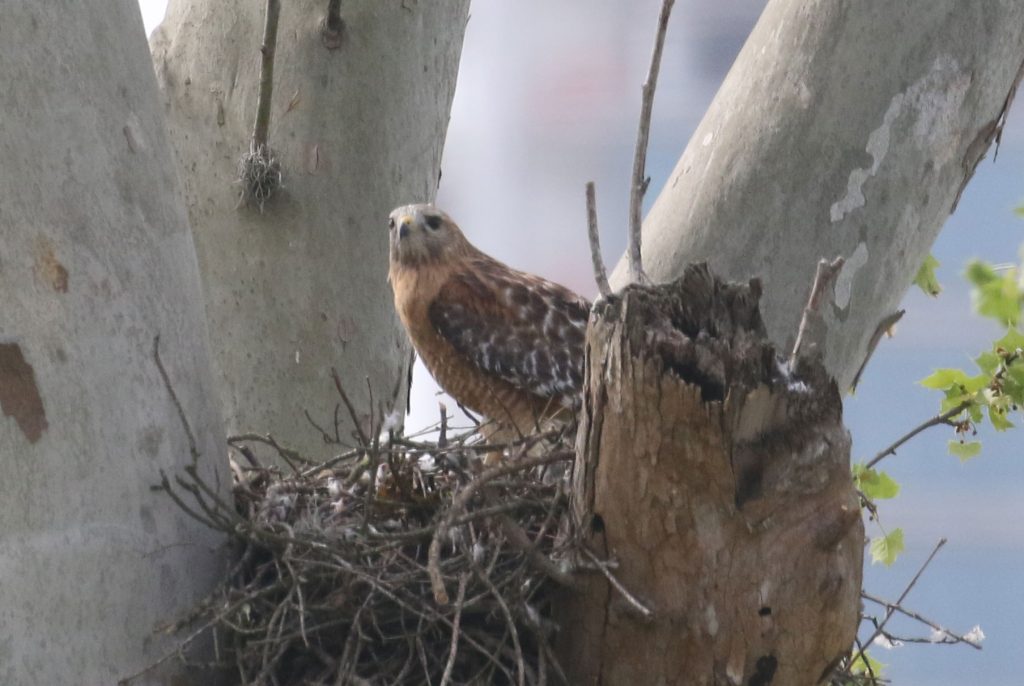 Last year, a pair of red-shouldered hawks raised their chicks in a sycamore tree north of the bayou just east of the Shepherd bridge. Red-shouldered hawks will re-use a nest multiple times, but they will also abandon a nest, so it is exciting to report that last year’s nest is being used again.
Last year, a pair of red-shouldered hawks raised their chicks in a sycamore tree north of the bayou just east of the Shepherd bridge. Red-shouldered hawks will re-use a nest multiple times, but they will also abandon a nest, so it is exciting to report that last year’s nest is being used again.
However, this is not the same pair as last year. I do not know for sure that these are both new hawks. But I am pretty certain that one of them wasn’t part of last year’s nesting pair.
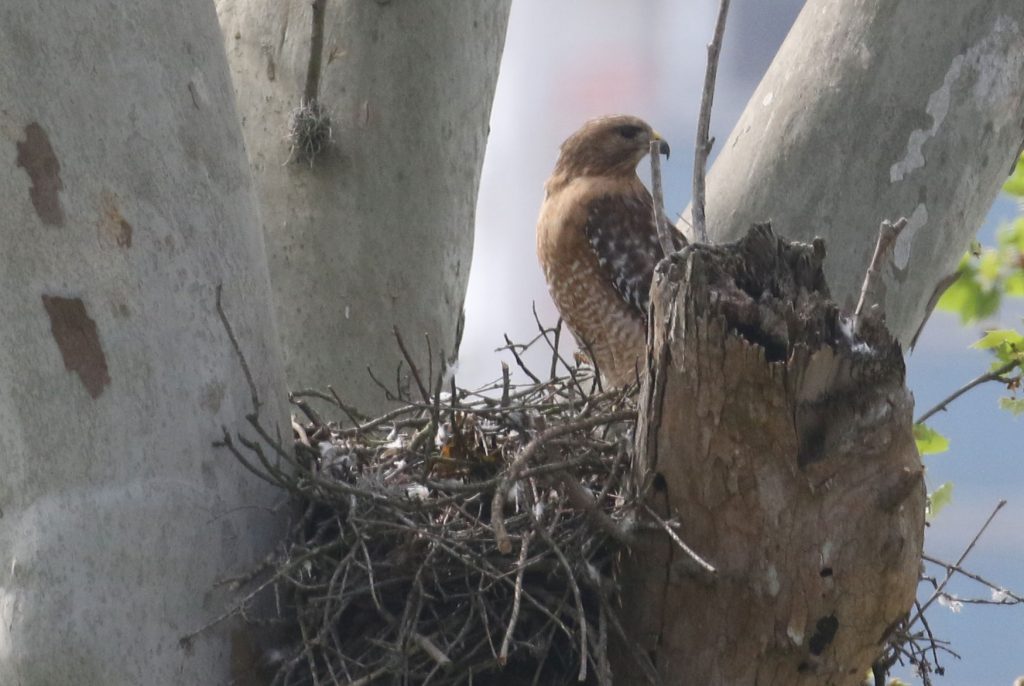
Hint. It’s this one!
Hawk plumage is not like songbird plumage. In songbirds, plumage patterns don’t vary much from bird to bird. An adult robin is going to have a red breast each time you see one. A male cardinal will have a black face. Hawks, however, are all over the place. Red-tailed hawks have such a variety of plumages, an entire page of most bird guides is needed to represent them all.
Last year’s breeding pair looked very much alike. They were both lighter colored birds. One was slightly more muted than the other, but without them side by side, I couldn’t tell who was who.
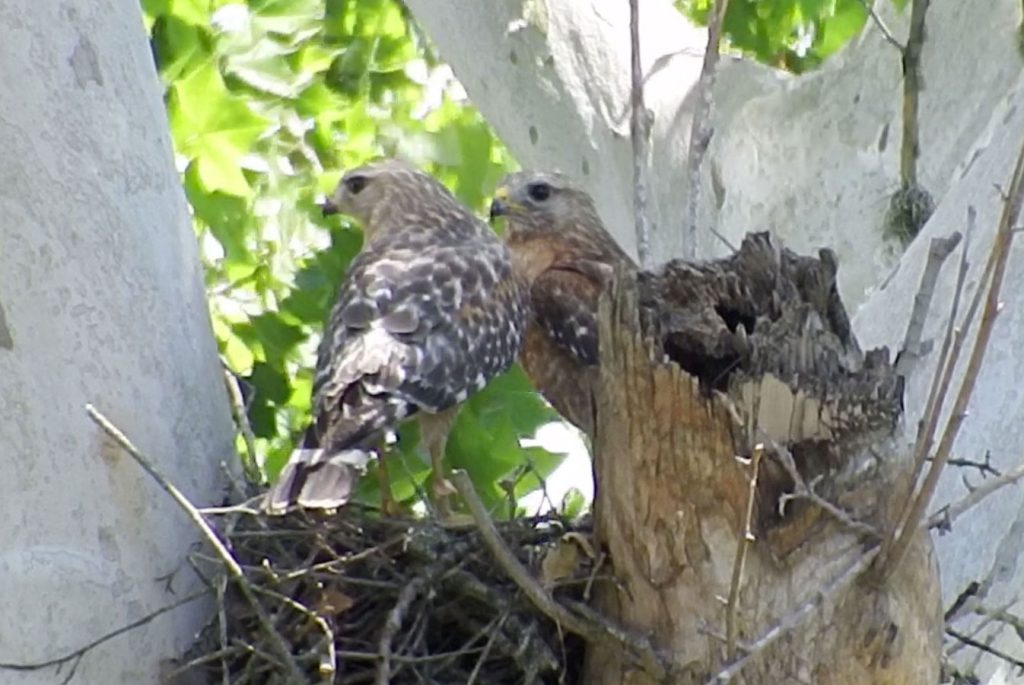
This is last year’s breeding pair. You can see the one on the left is paler than the one on the right, but notice also that both of them have heads that are predominantly gray.
This year, one of the hawks has a grey face and this hawk could be last-year’s less-muted partner, but the other hawk is definitely new.
This hawk is notably dark. I noticed it first in a photo sent to me by fellow master naturalist David Strong. I consider him my hawk whisperer because he was the person who found the nest and let me know about it. He caught this photo of the hawks last week and that just isn’t a last-year face.
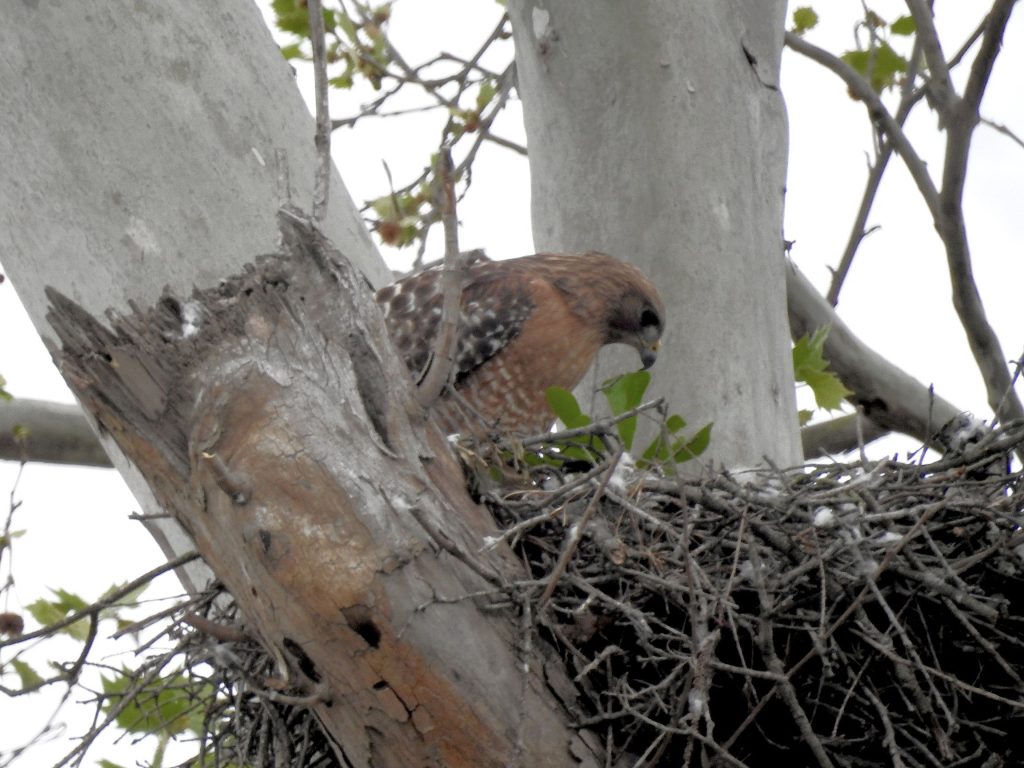
This is David’s photo. I ran into David before I ran into the hawk so this photo was my wake-up that things had changed.
It takes just over a month for a red shouldered hawk to hatch an egg. Most of the nest sitting is done by the female but the male will spell her a bit and will bring her food during the ordeal.
Knowing this, I perhaps can figure out which bird is male or female by who is spending life on the nest and who is there only occasionally. I cannot claim that this knowledge will change my understanding of the hawks, but with social distancing, I’ve got to get gossip where I find it. Our new hawk neighbors, for example. I hear one of them’s been married before!
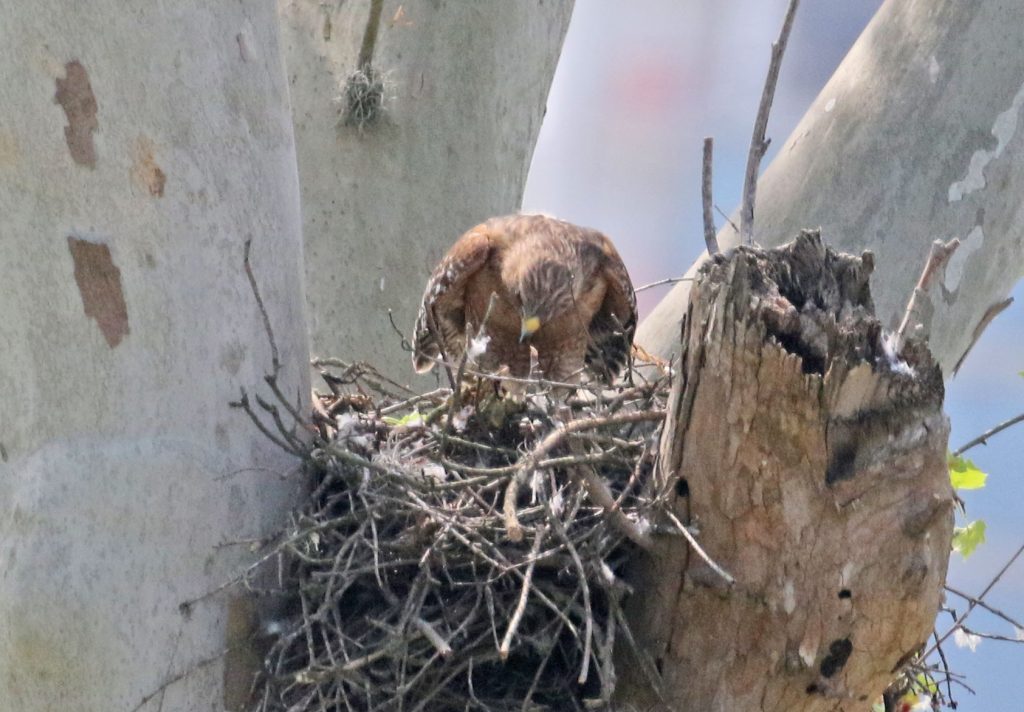
My early bet is that the new (darker-headed) hawk is the female. I spent an hour and a half standing on a ladder staring at the nest through a camera. During this time, new hawk spent more time on the nest and also did light housekeeping. BTW, notice how cleanly cut some of the branches making up the nest are. The hawks are using things we cut up!

